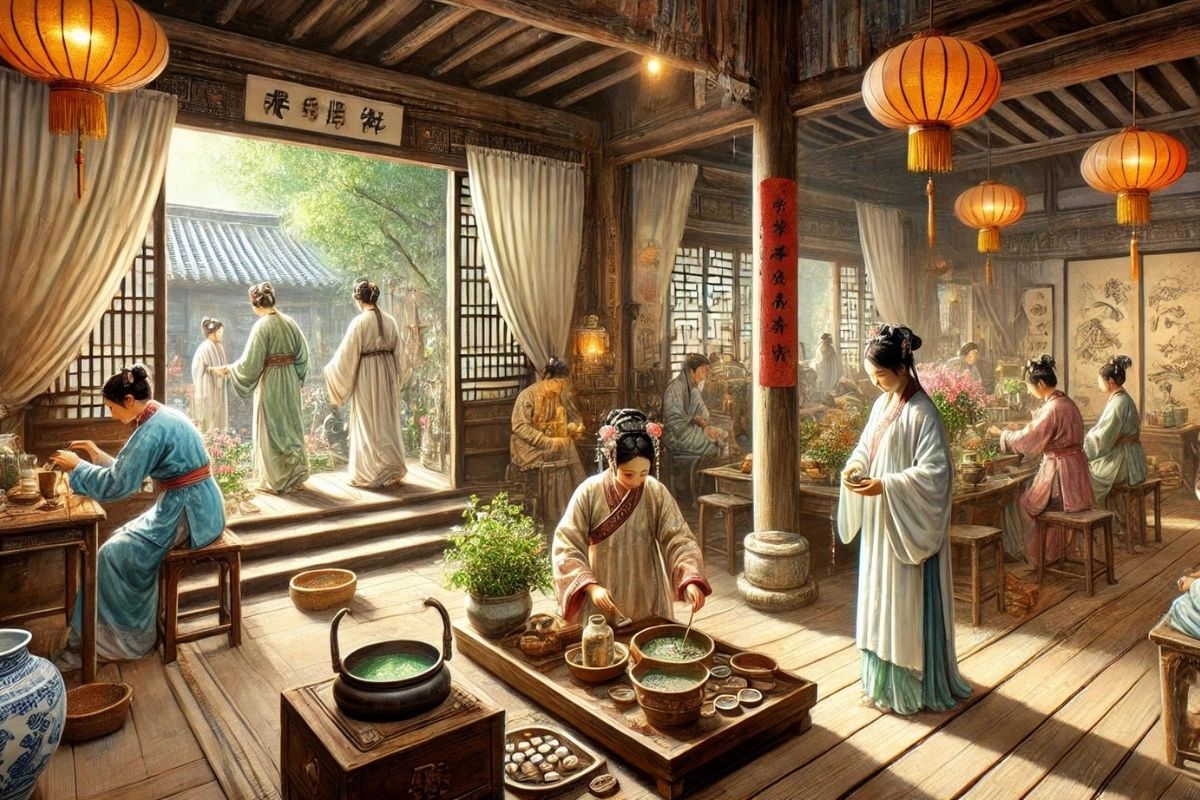Feminine cycle is a characteristic piece of life, and the manners by which various societies have overseen it give interesting bits of knowledge into their cultural standards, innovative progressions, and medical services rehearses. In ancient developments, these practices were frequently profoundly entwined with the accessible assets, winning strict convictions, and the general comprehension of medication. The subject of how did ancient China deal with periods opens a window into the past, uncovering a complicated methodology impacted by Confucian ideals, customary Chinese medication, and Taoist standards.
Cultural Setting and Mentalities Toward Menstruation
In ancient China, feminine cycle was not just a natural peculiarity but rather likewise a subject of social and otherworldly importance. The cultural standards of the time, vigorously impacted by Confucian and Taoist idea, saw the period as a critical sign of wellbeing and essentialness in ladies. It was firmly connected to the idea of ‘yin’ (the ladylike or negative rule), which supplemented the ‘yang’ (the manly or positive guideline) to keep up with the equilibrium of the universe.
The impression of feminine cycle in ancient Chinese society was dualistic. On one hand, it was viewed as a characteristic and fundamental physical process, demonstrative of a lady’s capacity to replicate. Then again, feminine blood was some of the time saw as “messy” and expecting ladies to seclude themselves or follow specific limitations during their periods. This duality affected the improvement of explicit practices and items to oversee period.
Hygiene Practices and Feminine Management
The way to deal with feminine cleanliness in ancient China was commonsense yet simple by the present guidelines. Ladies essentially utilized materials like clothes, cotton, or other retentive materials as improvised sterile cushions. These were many times natively constructed and reusable, washed completely after use and put away for future cycles. The richer classes could bear the cost of additional modern materials and would do well to offices for overseeing neatness.
Cleanliness during feminine cycle was additionally connected to the more extensive pharmacopeia of customary Chinese medication (TCM). Natural cures were regularly used to ease feminine agony and direct the cycle. Fixings, for example, angelica root, motherwort, and red dates were frequently endorsed to assist with blood flow and to adjust the body’s energies, mirroring the all encompassing nature of TCM.
Traditional Chinese Medication and Feminine Health
Conventional Chinese medication assumed a critical part in how ancient China dealt with periods. The TCM structure depends on the equilibrium of Qi (energy) and the agreement of the body’s crucial substances. As per TCM, feminine inconsistencies were frequently viewed as signs of more profound medical problems. Experts would utilize different demonstrative apparatuses, for example, beat taking and tongue assessment, to decide the basic irregular characteristics and endorse medicines appropriately.
Dietary suggestions were likewise vital in overseeing feminine cycle. Food sources that were considered ‘cool’ or ‘hot’ were prescribed in view of the singular’s requirements to adjust the body’s Yin and Yang. For instance, it was normal to encourage ladies to eat warm food varieties during their periods to make up for the deficiency of blood, which was viewed as a warm substance.
Social and Strict Effects on Feminine Practices
The social and strict setting of ancient China further molded mentalities and works on concerning feminine cycle. In a few Taoist practices, feminine blood was viewed as strong, and in specific ceremonies, it was utilized as an image of richness and life force. Be that as it may, in the more generally noticed Confucian culture, the accentuation was on virtue and custom tidiness, prompting rehearses where ladies could segregate themselves during feminine cycle to keep away from ‘tainting’ others.
In spite of these limitations, the job of ladies in ancient Chinese society was mind boggling and dynamic, and their treatment of feminine cycle mirrored their flexibility to cultural assumptions and individual wellbeing needs.
Evolution of Feminine Practices Over the Centuries
As hundreds of years passed, feminine practices in China developed with changes in friendly designs, financial circumstances, and clinical progressions. The presentation of new materials and the steady change in cultural perspectives prompted superior feminine cleanliness rehearses. Be that as it may, the center standards saw in ancient times — like the utilization of home grown medication and the significance of dietary changes — keep on affecting present day rehearses in certain pieces of China today.
Investigating how ancient China dealt with periods uncovers a scene set apart by a mix of reasonableness, social convictions, and clinical information. The ancient Chinese ways to deal with period, well established in the methods of reasoning of equilibrium and congruity, feature a modern comprehension of human wellbeing and the regular world, perspectives that keep on being important in the present conversations about wellbeing and health.


